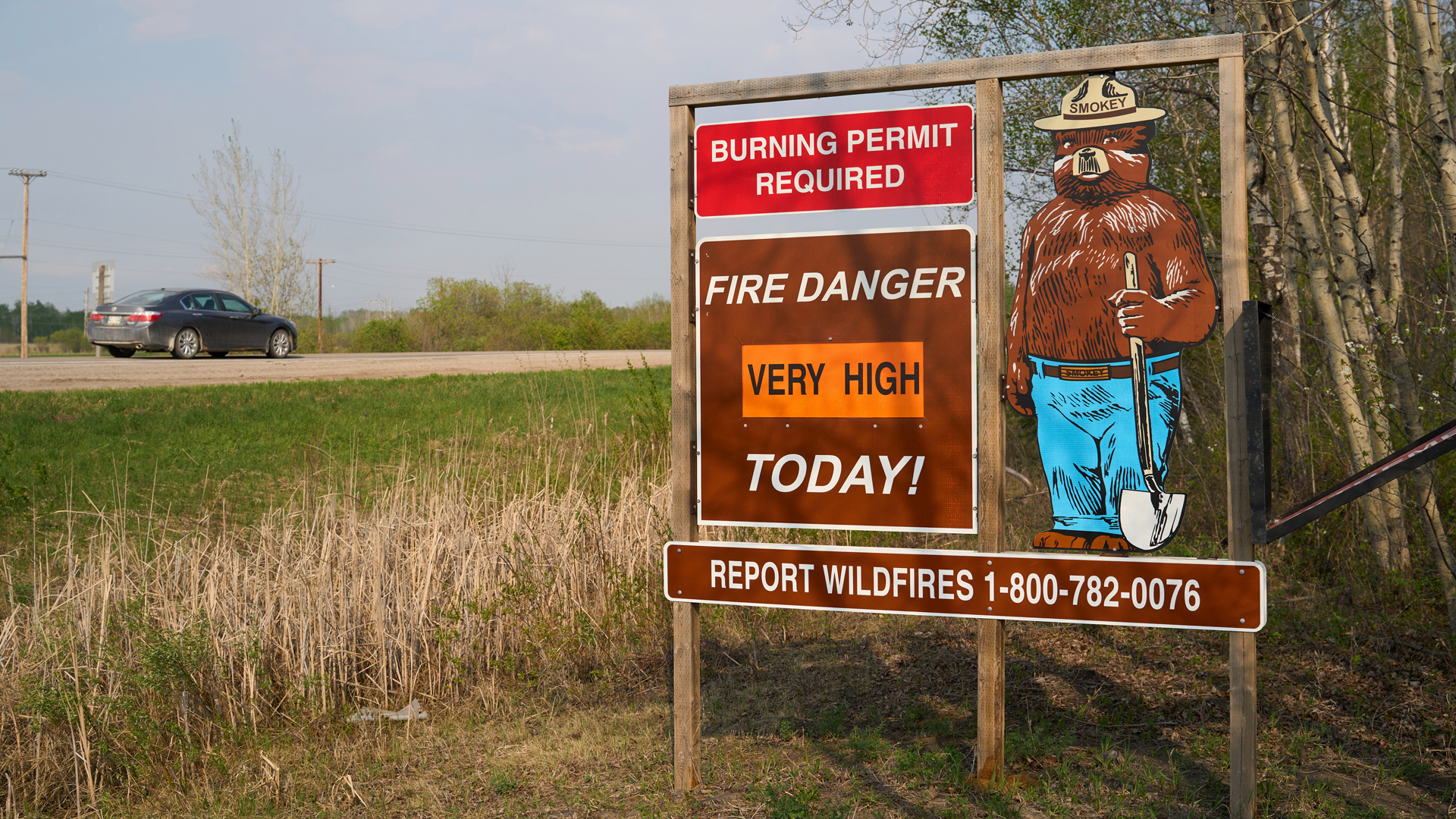
Every day there are thousands of Canadians who are suffering as a direct result of wildfires, flooding or other climate-related illnesses. They are reclaiming their basements from mould, because of flooding. Or they are weighing the pros and cons of uprooting their entire lives and leaving their family homes. Coping with extreme events like spring and winter flooding, wildfires, heat waves, ice and windstorms, as well as the power outages that go with these events, affects our physical and mental health.
Acute, or extreme, events that are becoming more intense because of human-caused climate breakdown caused by global heating are associated with chronic physical health concerns such as increasing exposure to smog, ticks causing Lyme disease, or ragweed worsening allergic reactions. Our understanding of the mental health effects of climate breakdown is also growing. Making the link between climate breakdown and physical and mental health is important, because the breakdown of the climate affects the environmental and social determinants of health and can undermine the work that governments are doing to improve well-being.
Recent research from the Conservation Council of New Brunswick, using 2019 Canadian Climate Atlas data and 2017 provincial community health profiles, highlights the need for health protection and promotion responses that are tailored to local needs. A comparison of two New Brunswick communities demonstrates this point.
Campbellton, a northern New Brunswick community, has the lowest median household income in the province. A large proportion of Campbellton’s population consists of vulnerable populations such as seniors ─ especially elderly women living alone ─ people living on low incomes, and people experiencing food insecurity. The factors associated with low income become more important when one is considering how to respond to the climate change impacts on health.
In contrast, Oromocto, where Canadian Forces Base Gagetown is located, has the highest median household income in the province. Its rate of chronic health conditions is higher than that of Campbellton, and the community has the perception that its mental and physical health is lower. Factors associated with military life are important to consider in designing climate adaptation strategies.
It is crucial to take socio-demographic differences into consideration. Seniors can be less mobile, and they could be managing several chronic health issues, coping with deteriorating sight and hearing, be isolated, and/or be managing on lower incomes. An older person, perhaps with asthma or diabetes, may be less able to manage these health risks during a heat wave or smog event, and may be less mobile during an extreme event such as flooding.
Low income and food insecurity also are associated with climate change. For example, if you are a single mother living on a low income in a badly insulated home with no air conditioning, you are at greater risk in the event of extreme heat and weather events, plus you have limited food on hand. You might not have a vehicle enabling you to leave home, or you may have fewer social contacts to reach out to for help if the power goes out.
Community-appropriate strategies need to account for projected changes in climate and health conditions in order to protect the most marginalized and vulnerable. We need to maximize opportunities to advance protection from extreme events and achieve goals for healthy aging and population wellness.
The good news is that responding to climate breakdown in an integrated and coordinated way would also have additional health benefits. Local food self-sufficiency, for example, can improve food security, particularly if climate breakdown disrupts global food production and importing food to locations such as New Brunswick becomes more expensive. Higher costs for food, especially fruits and vegetables, is a concern in New Brunswick, because only about half of the population eats five or more servings of fruit and vegetables per day.
A more active lifestyle could reduce reliance on gasoline-powered vehicles and increase physical activity, which in turn could help reduce the chronic diseases and mental health issues associated with inactivity. More green space in our communities would keep us cool on hot days, create places for us to walk and play, and improve our mental health and well-being.
Clean electricity and transportation cuts greenhouse gases as well as air quality pollution; both affect asthma and heart and lung health. Improved community design can increase active living, reduce reliance on personal vehicles, and add urban forest and gardening spaces.
In our review of almost 60 New Brunswick community climate-change risk assessment and climate-adaptation plans, we find there is a strong focus on infrastructure but no consideration of the need to prepare for the health and well-being effects of climate breakdown. We propose that the federal and provincial governments take the following measures:
- Maximize the potential to secure both health and climate change benefits by making physical and mental health protection and promotion a driving force behind climate-change mitigation and adaptation plans, as well as developing strategies for their implementation.
- Integrate and coordinate climate-action strategies with federal and provincial strategies aimed at improving wellness and aging. Commit to tracking and reporting on climate- change-related health and well-being indicators to monitor the progress over time.
- Protect communities and households from the acute and chronic physical and mental health effects of climate change by accelerating investments in infrastructure to minimize flood risk, protect seniors from extreme heat, and protect the population as a whole from Lyme disease and other vector-borne diseases.
- Over the next 10 years, secure air quality and greenhouse gas (carbon pollution) reductions by staying focused on the electrification of the Canadian economy. Provinces that are dependent on coal, oil and natural gas for their electricity production, as is New Brunswick, must, by 2030, phase them out in favour of non-greenhouse-gas-emitting sources of power.
All Canadians care about their own health and well-being as well as that of their families and communities. The vast majority of Canadians are worried and anxious about climate change. If the federal and provincial governments make health and well-being the motivation for responding to the climate emergency, we could reduce political polarization, gain benefits for our health and mitigate climate change. Such a focus has the potential to build social consensus for climate action.
Photo: Shutterstock, by Sergey Nivens.
Do you have something to say about the article you just read? Be part of the Policy Options discussion, and send in your own submission. Here is a link on how to do it. | Souhaitez-vous réagir à cet article ? Joignez-vous aux débats d’Options politiques et soumettez-nous votre texte en suivant ces directives.








